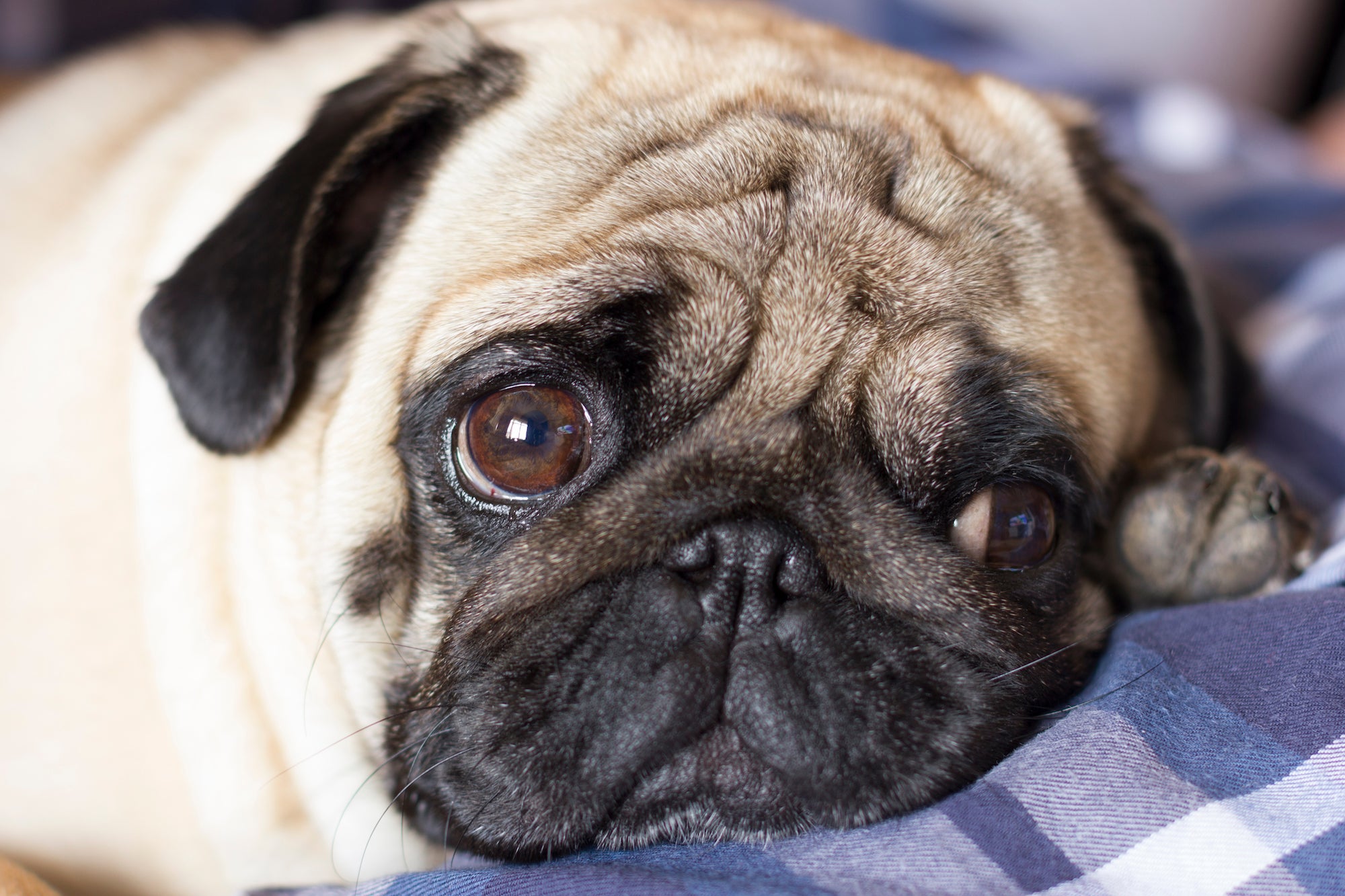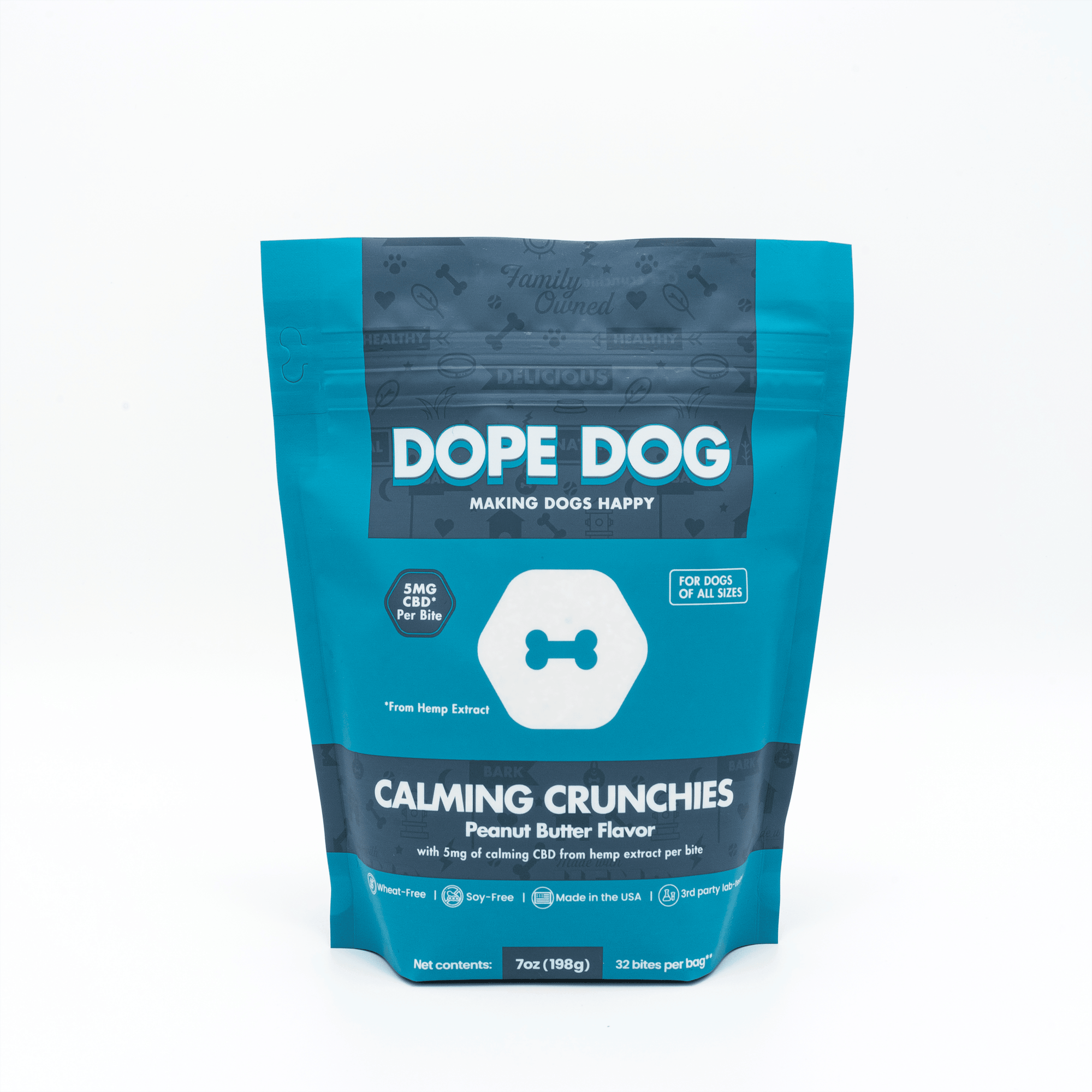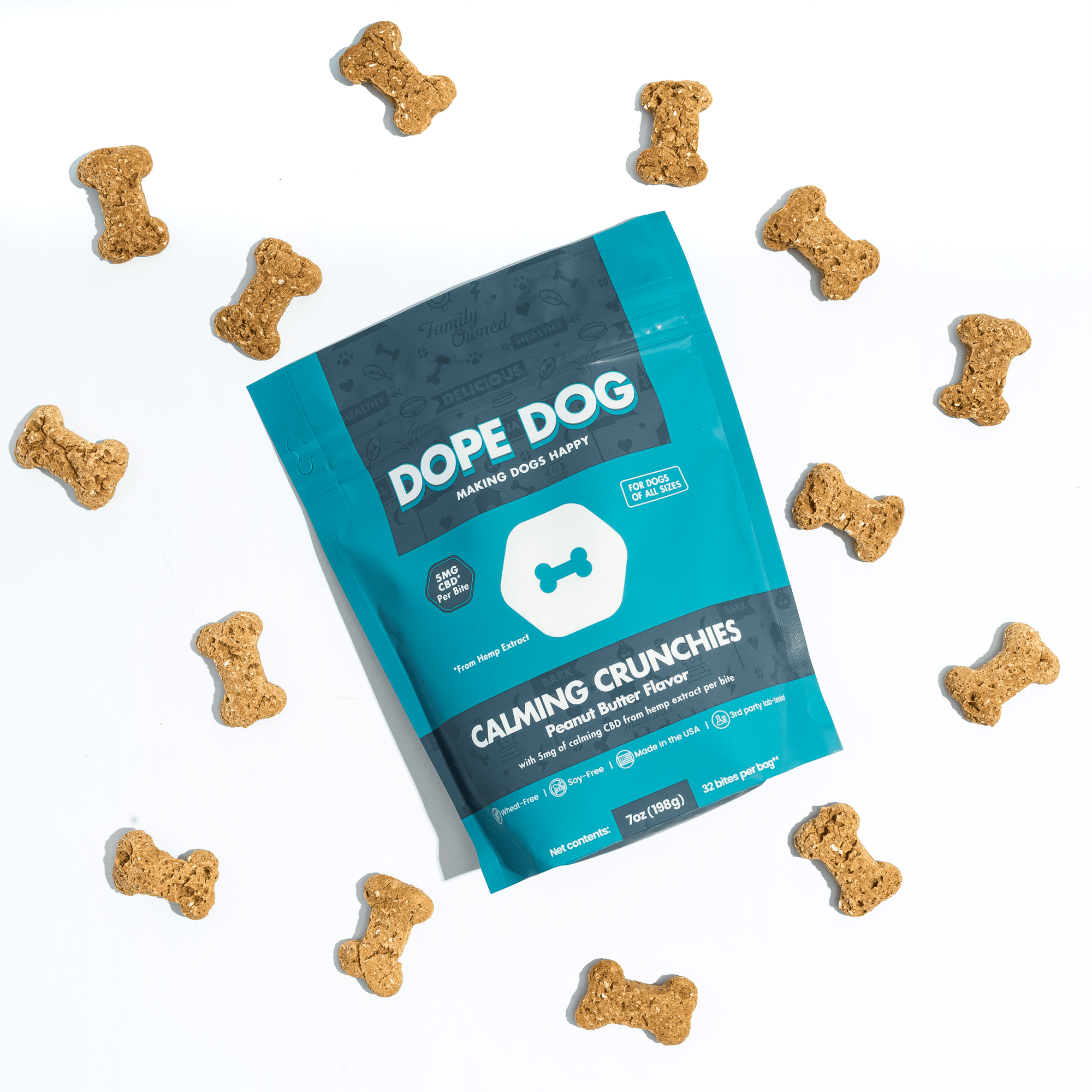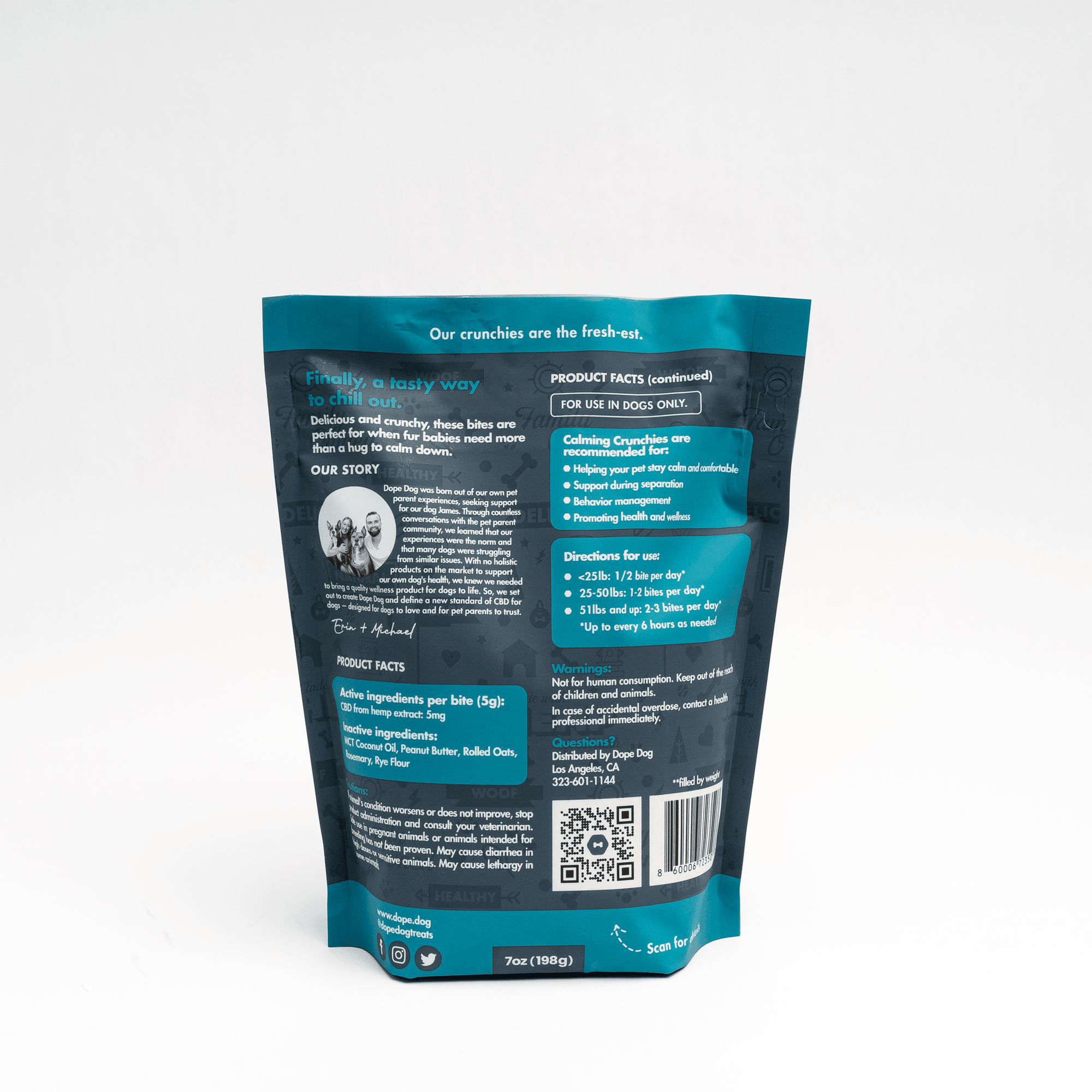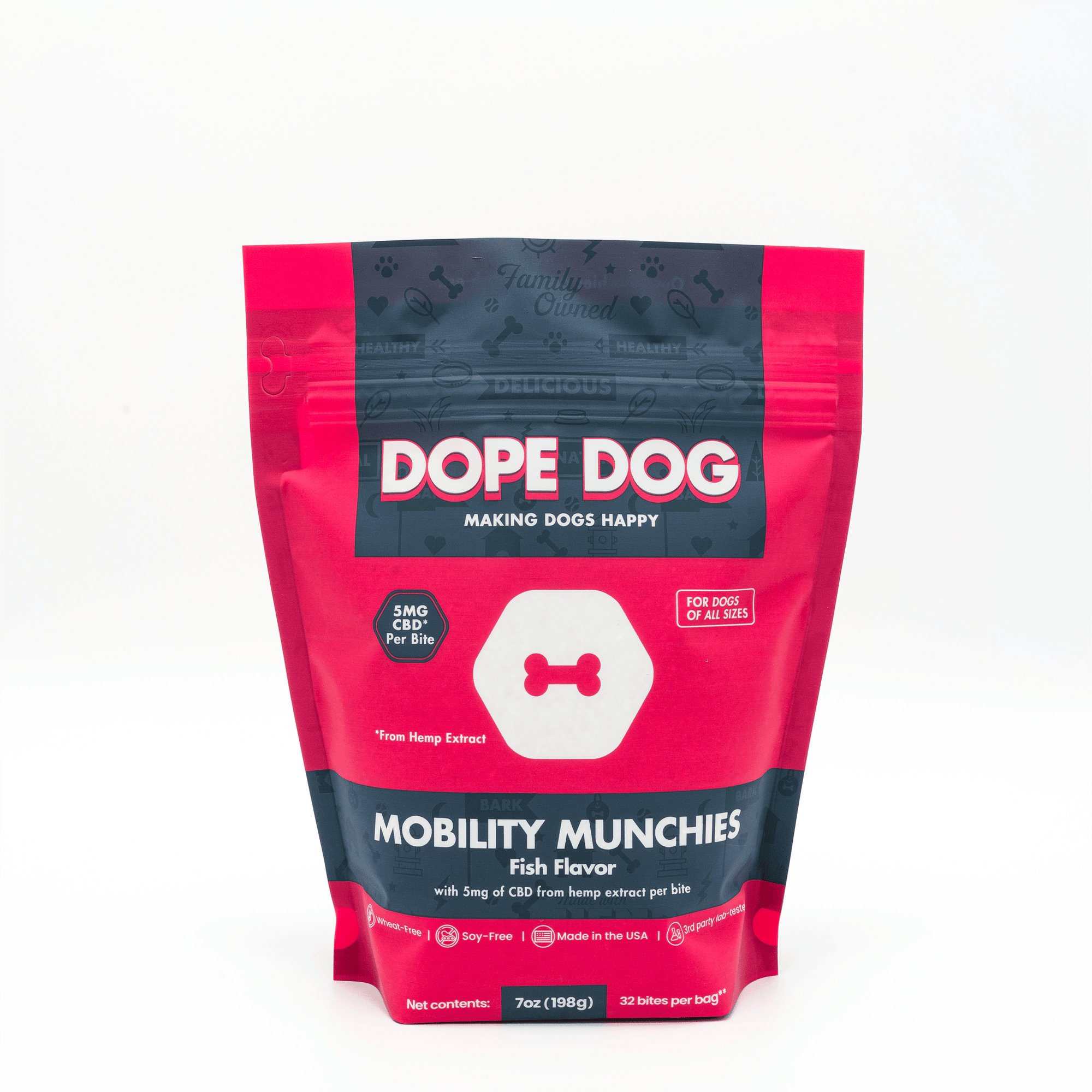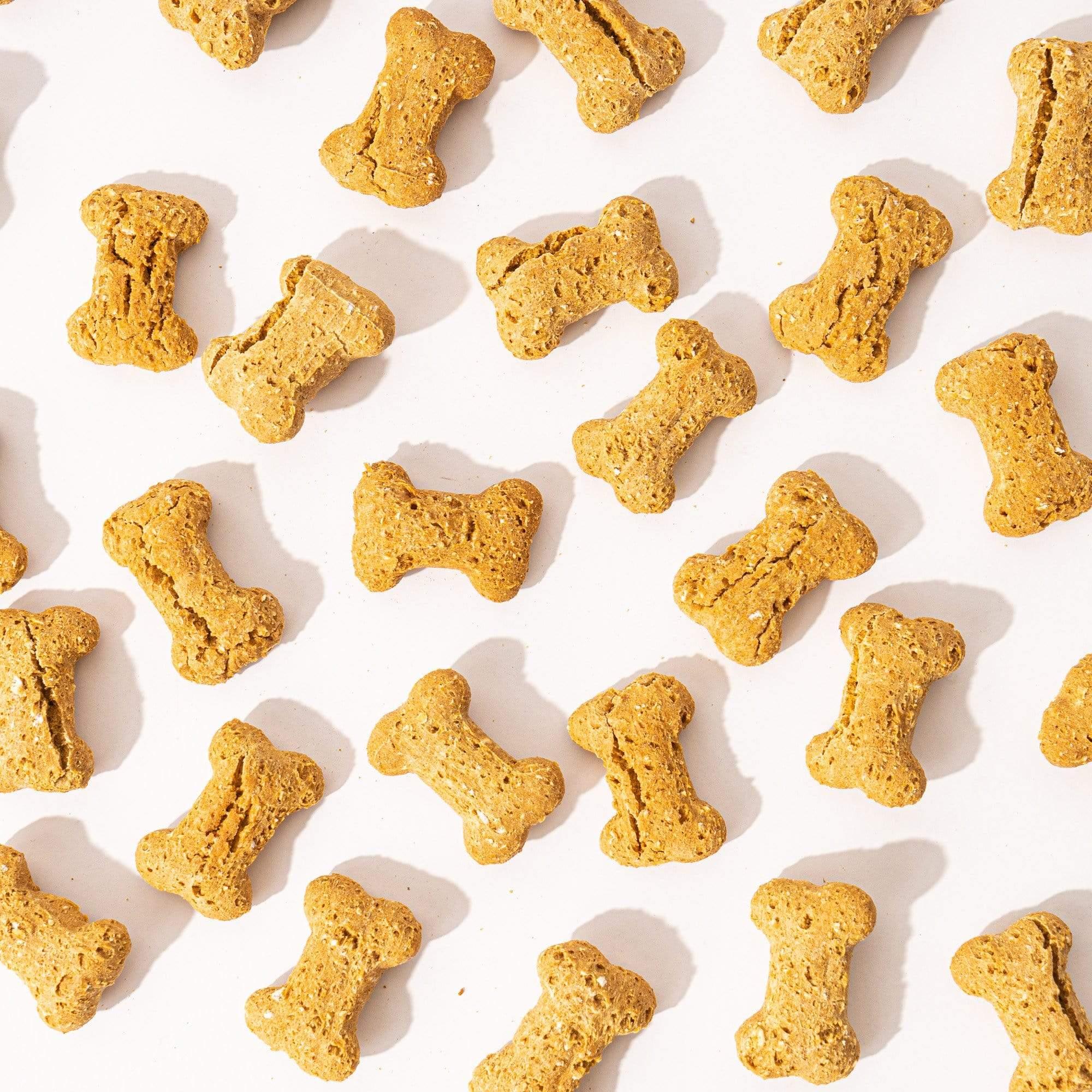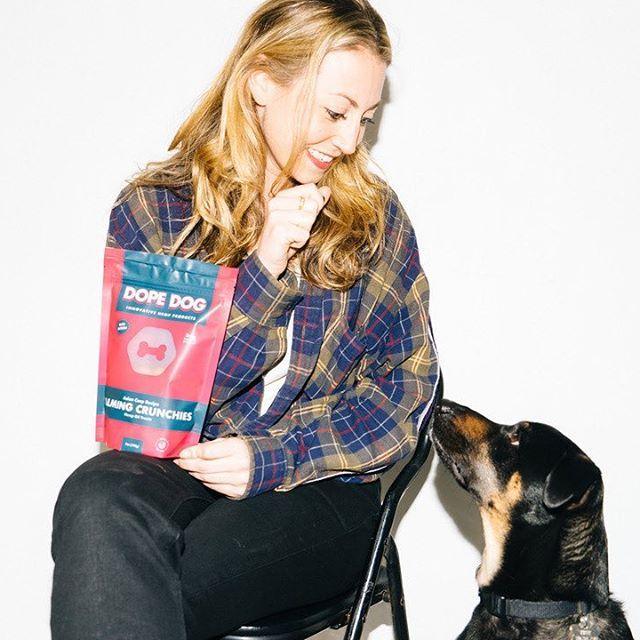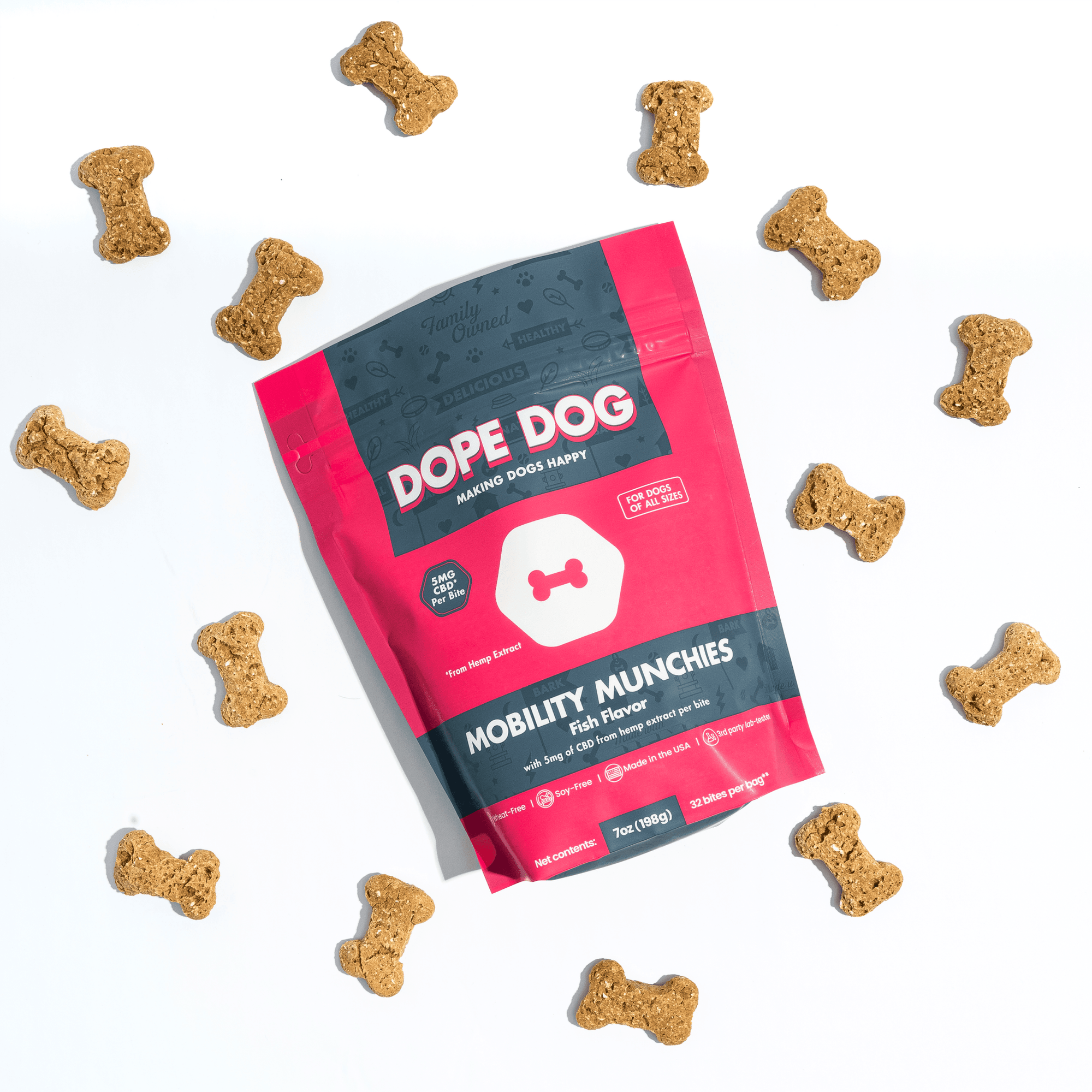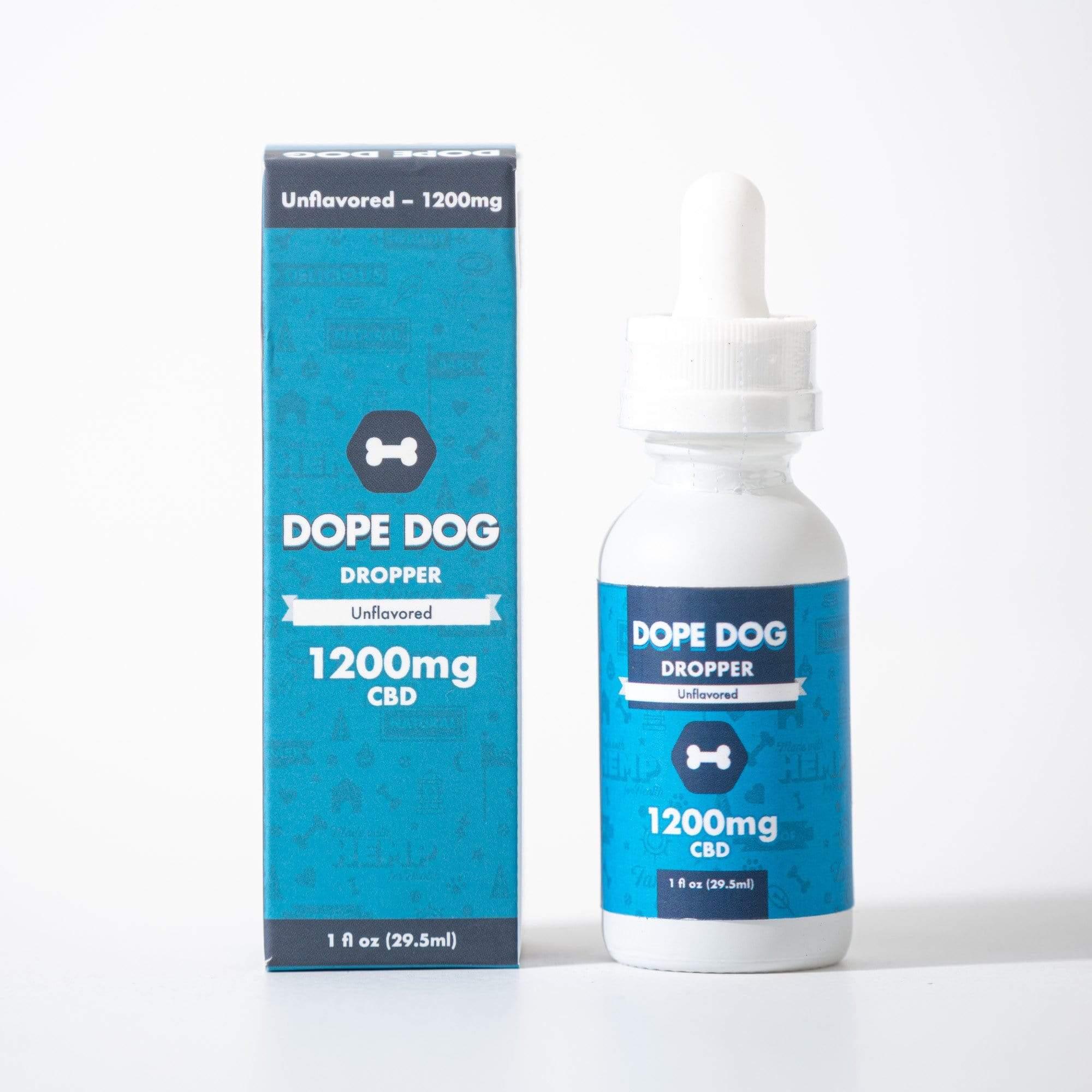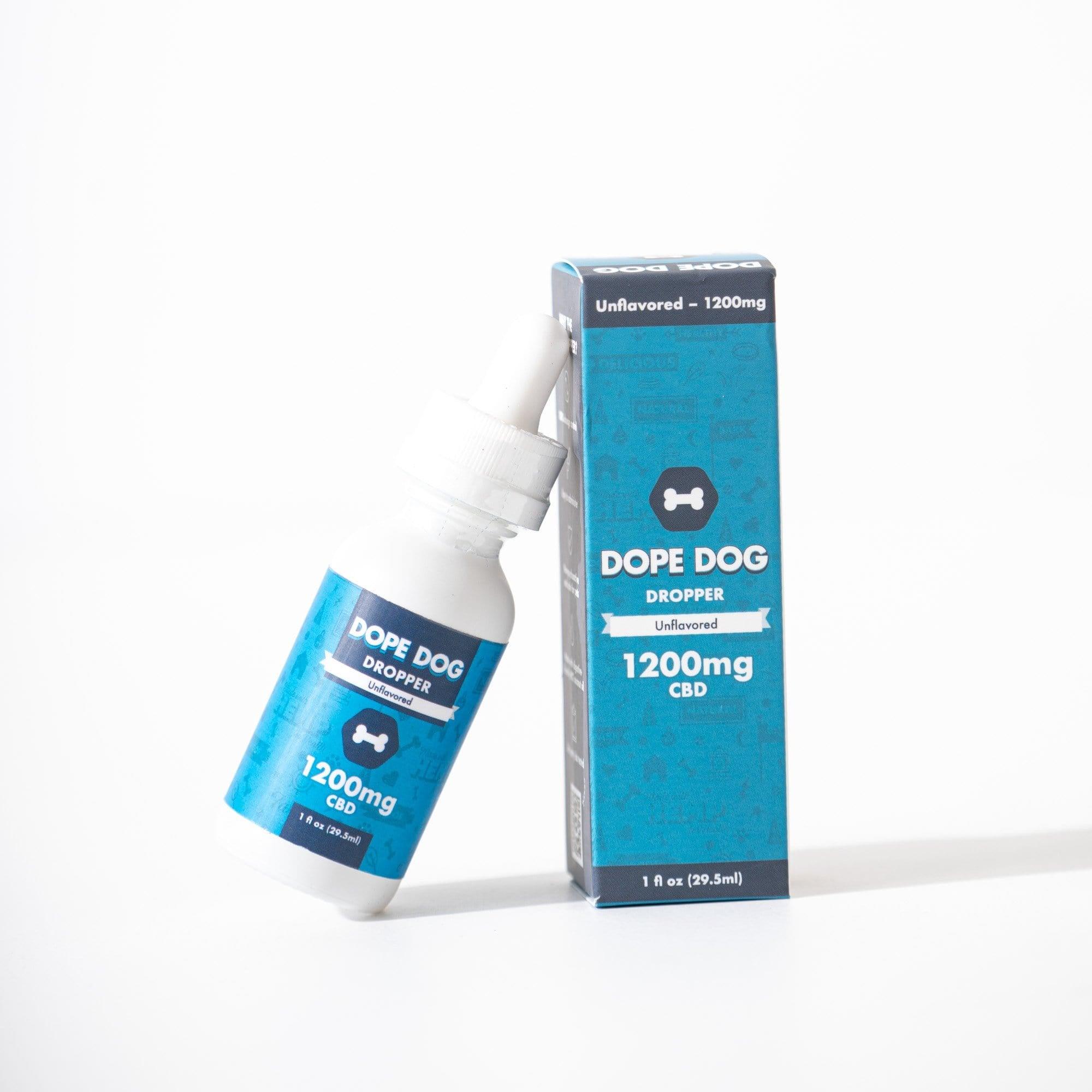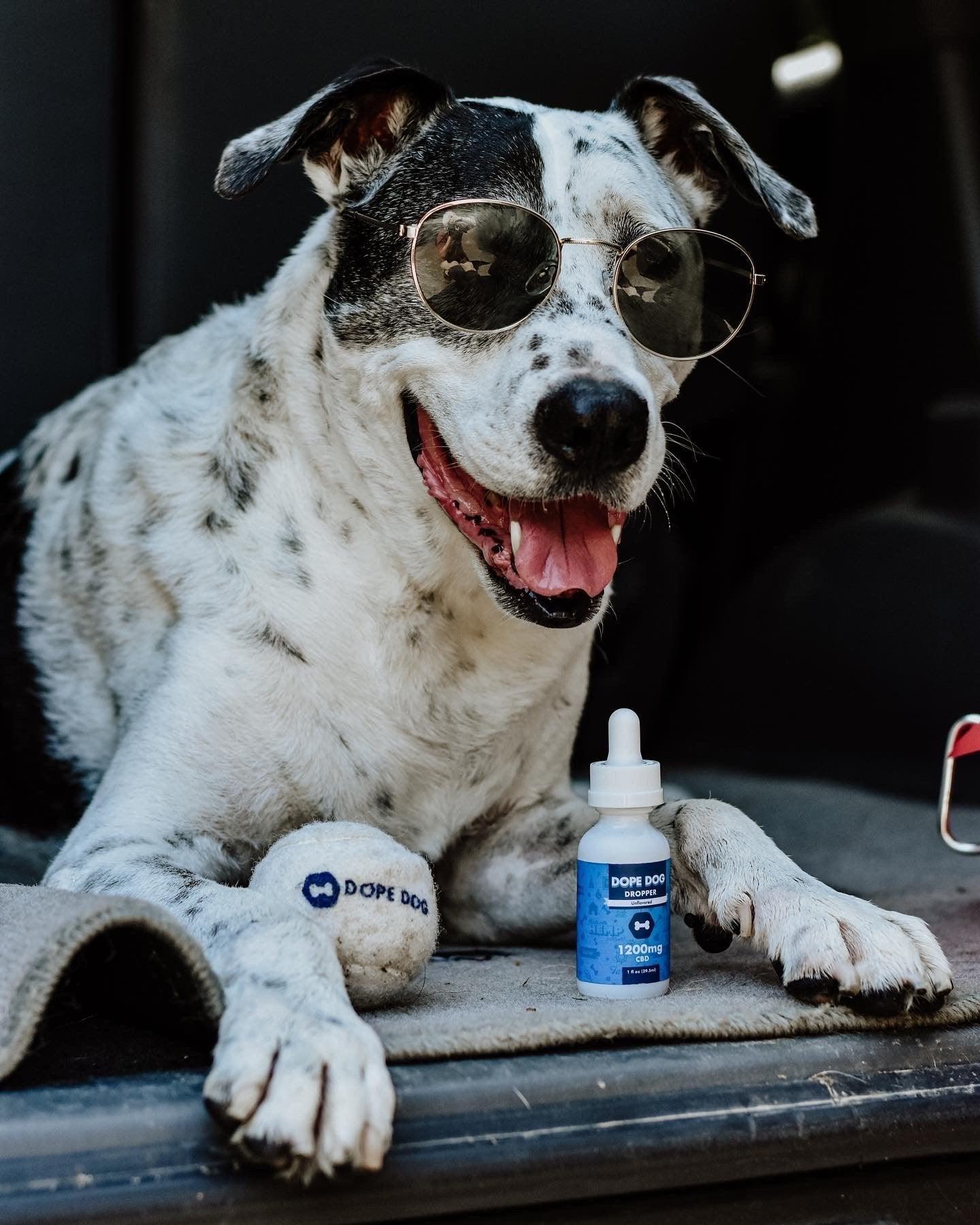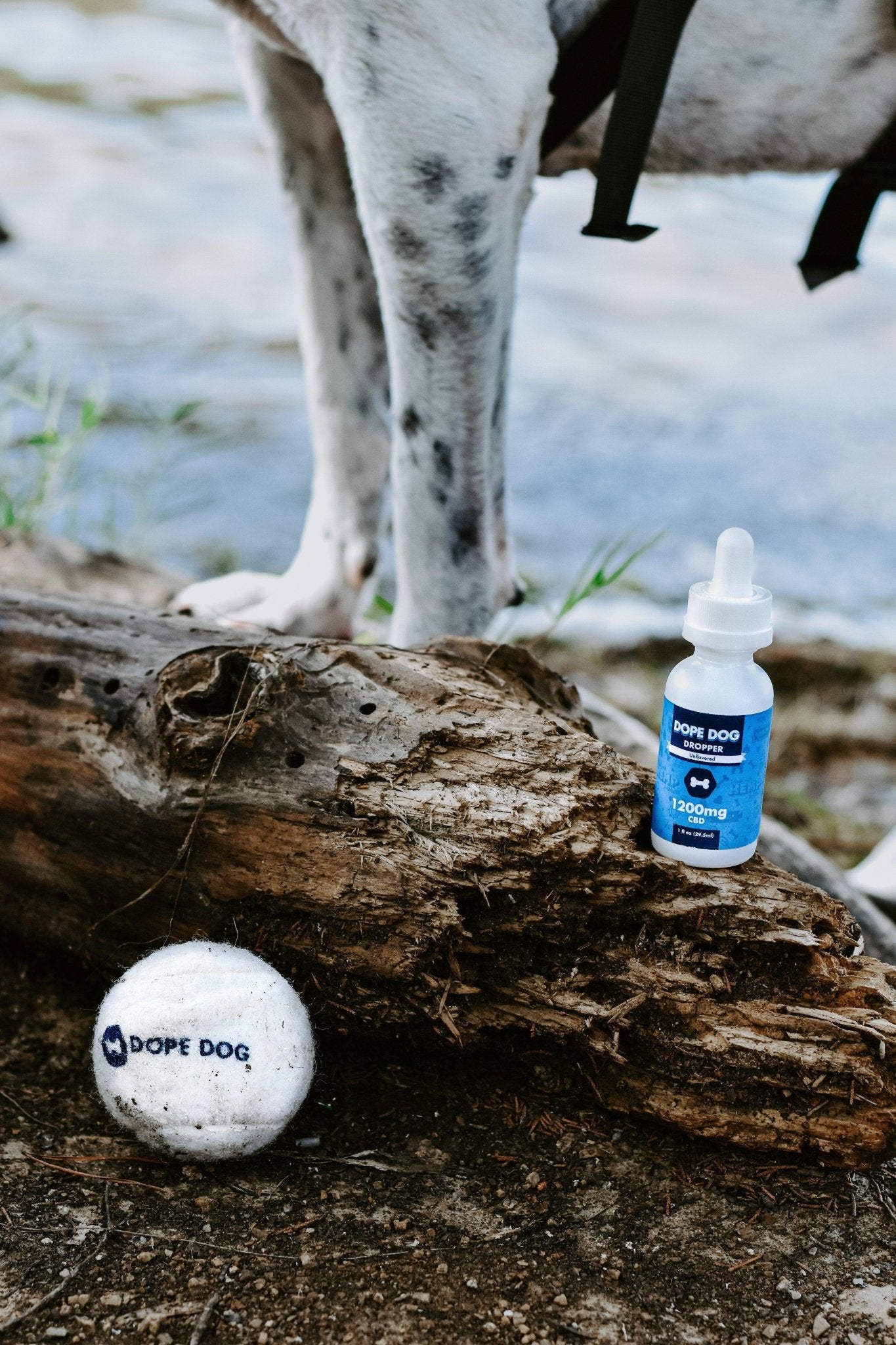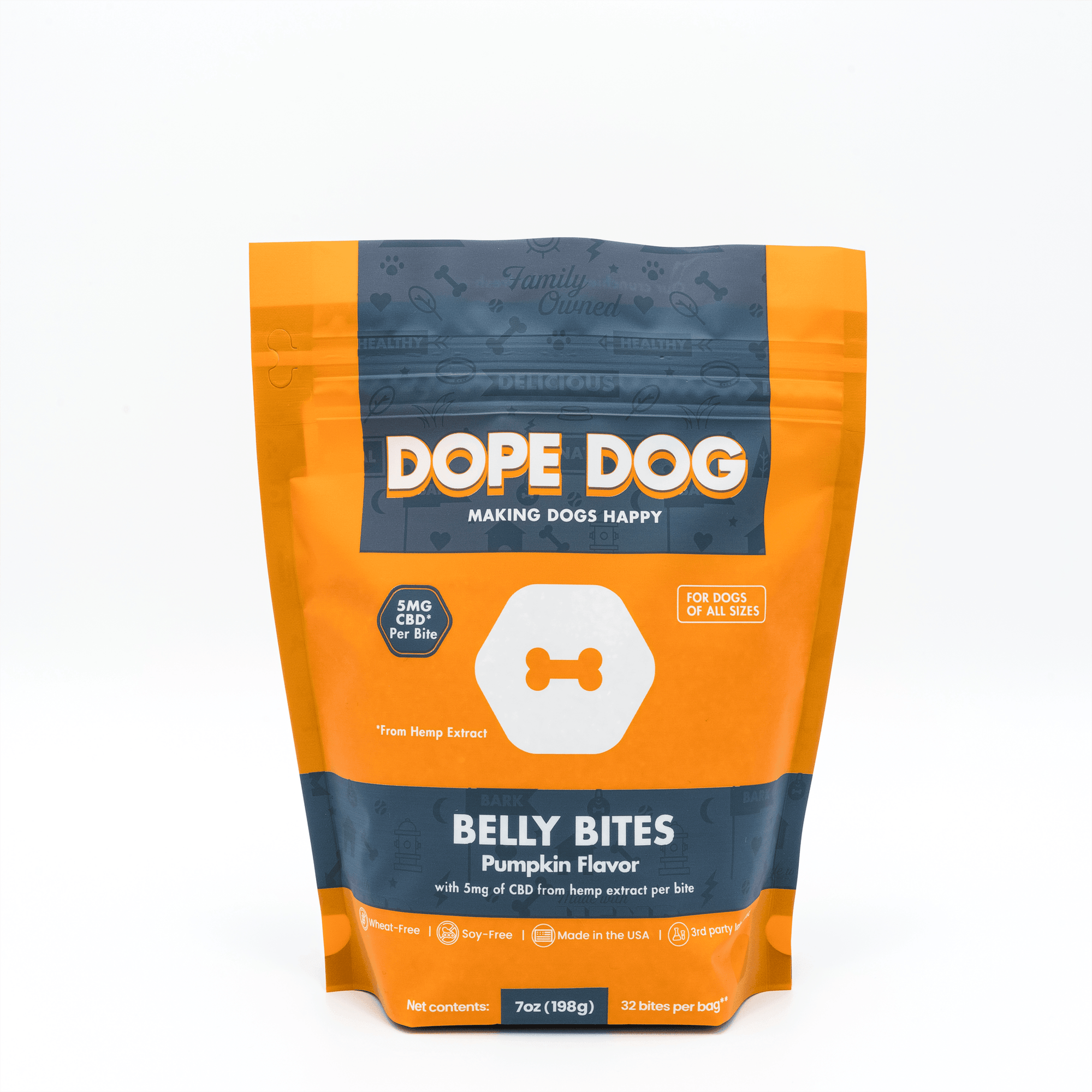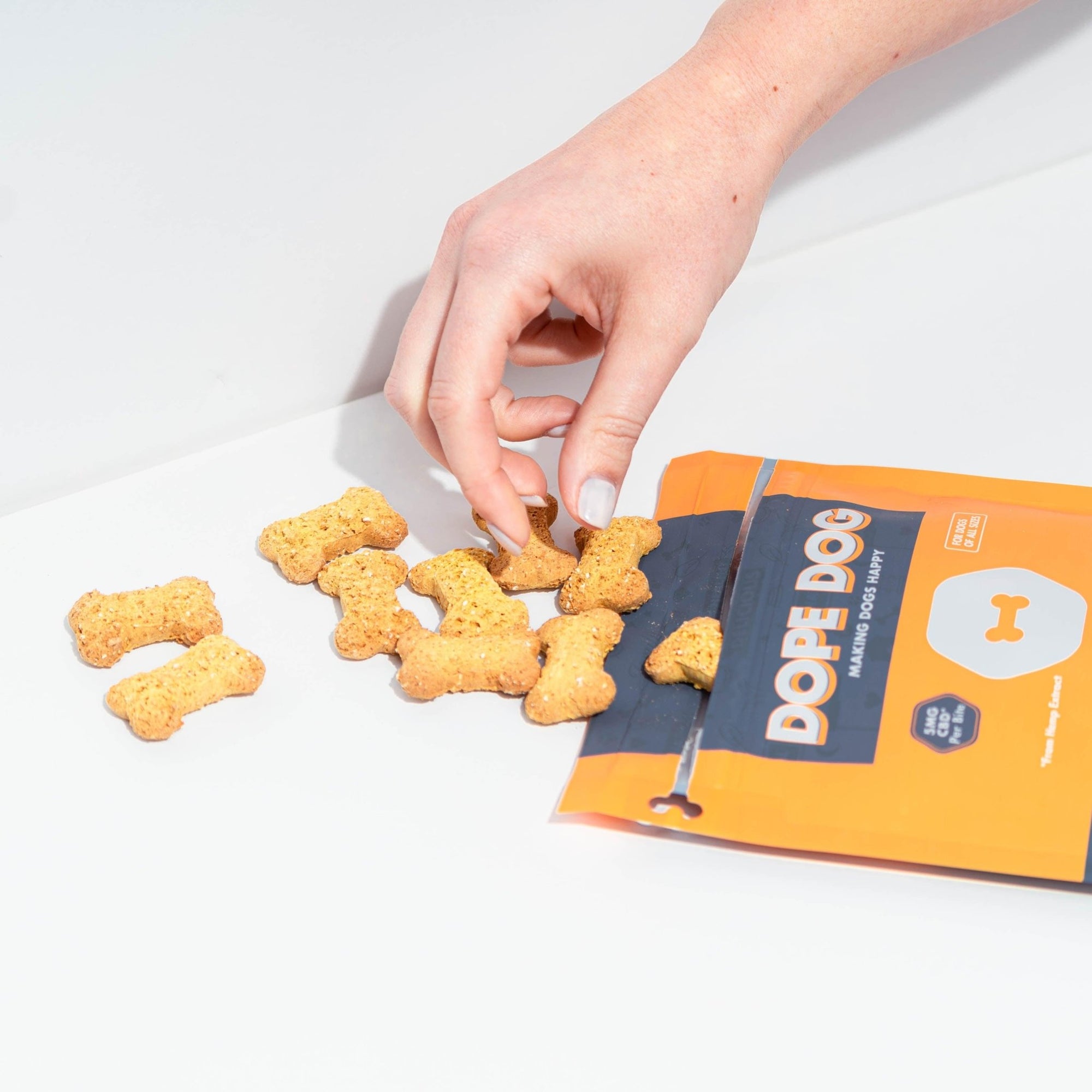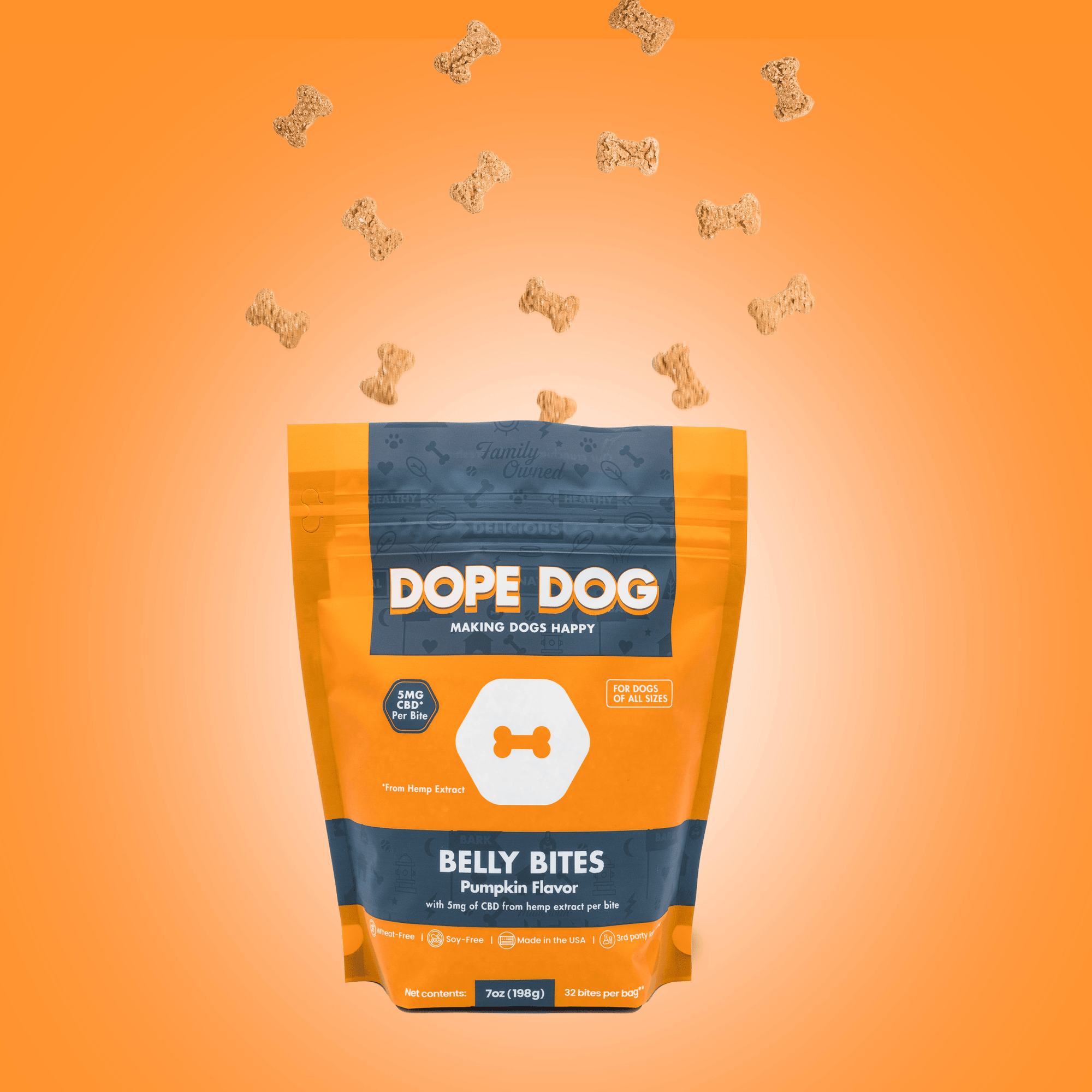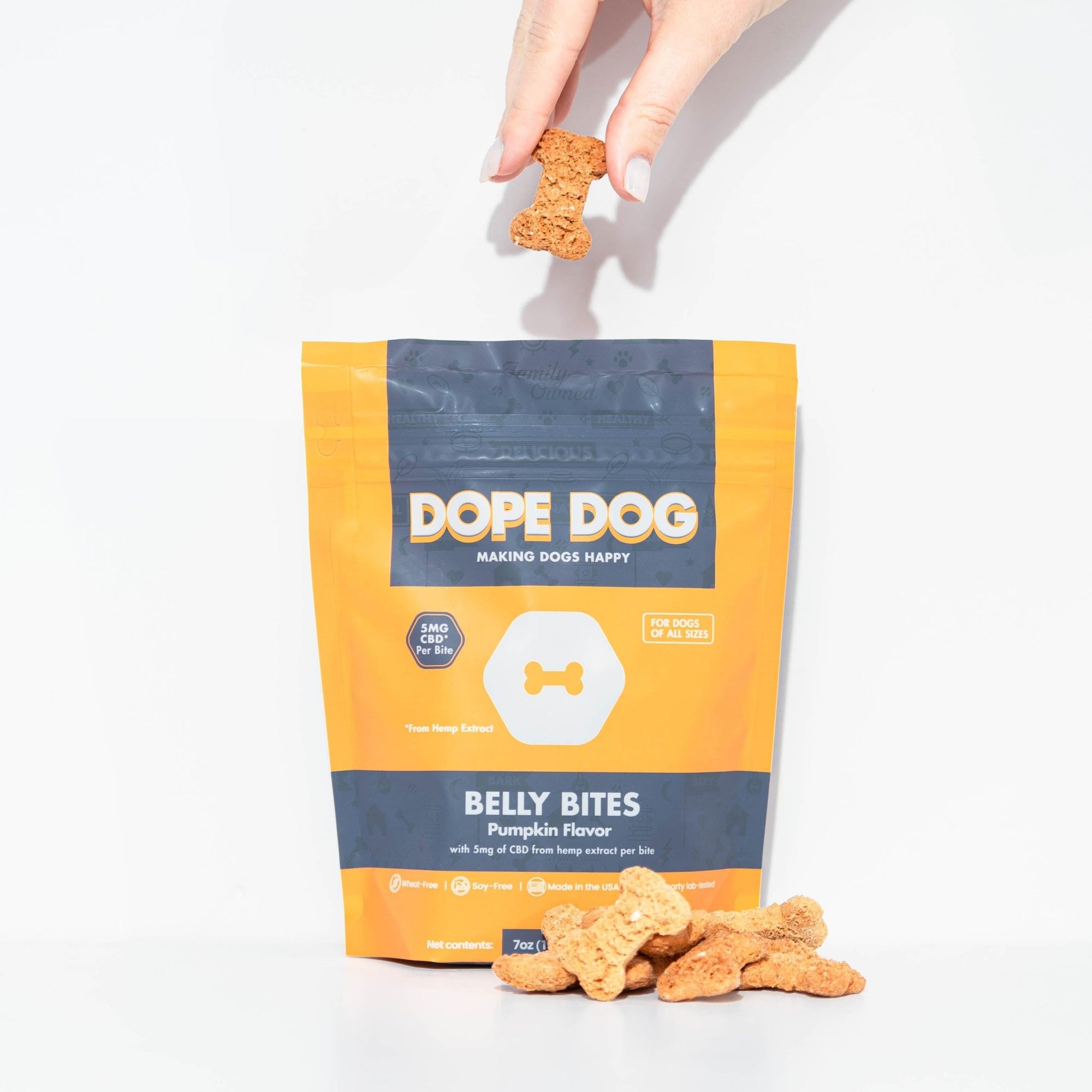Is CBD Oil Good for Dogs with Cancer?
Cancer is a heartbreaking condition that affects both humans and pets, including our four-legged family members. Also, ensuring your pet's well-being, particularly during a cancer diagnosis, is a priority. Furthermore, traditional therapies like chemotherapy are available, they often come with severe side effects and financial burdens.
Recently, there has been a surge in interest concerning CBD oil for dogs with cancer. For those wondering how much CBD oil for dogs with cancer is appropriate or looking for a reliable CBD oil for dogs dose calculator, you've come to the right place. Cannabidiol (CBD), a hemp-derived compound, offers therapeutic advantages from reducing pain and inflammation to enhancing general health, making it an intriguing natural alternative for alleviating cancer symptoms in dogs.

Related: CBD for Itchy Dogs | Dope.dog
Choosing the right CBD oil product for dog lumps or cancer is crucial. Then, We'll guide you through the process of picking a high-quality product and discuss appropriate dosages. Safety considerations, potential side effects, and interactions with other medications will also be covered.
To give you a complete perspective, we will share CBD oil success stories and case studies, which could essentially say, "I cured my dog's cancer." These accounts, backed by interviews with veterinarians, offer valuable insights into specific cancer types and effective dosage and treatment protocols. Such testimonials offer not just hope but practical guidance for incorporating CBD oil into a well-rounded cancer treatment regimen.
Lastly, we'll look into holistic methods to support dogs with cancer, covering complementary treatments, nutrition, and emotional support. Routine vet check-ups and progress monitoring are emphasized as key components of a comprehensive cancer treatment approach.
Understanding Cancer in Dogs
Cancer is a complex and devastating disease that can affect dogs of all breeds and ages. Cancer occurs in about 1 in 3 dogs and is a leading cause of death, caused by abnormal cells growing uncontrollably.
1.1 Introduction to cancer in dogs Cancer is not a single disease but rather a group of diseases that can manifest in various forms in dogs. These can include skin tumors, mammary gland tumors, lymphoma, osteosarcoma, hemangiosarcoma, and many others. Each type of cancer has its unique characteristics and treatment considerations.
1.2 Common types of cancer in dogs Some of the most common types of cancer that affect dogs include:
- Mast Cell Tumors: These are one of the most common skin tumors in dogs and can vary in severity and aggressiveness.
- Lymphoma: Lymphoma is a cancer of the lymphatic system and can affect various organs, including lymph nodes, liver, spleen, and bone marrow.
- Osteosarcoma: This is a bone cancer that usually affects large and giant breed dogs and commonly occurs in the long bones.
- Hemangiosarcoma: Hemangiosarcoma is a highly aggressive cancer that originates from blood vessels and commonly affects the spleen, liver, or heart.
- Mammary Gland Tumors: Mammary gland tumors are more common in female dogs and can be either benign or malignant.
Related: CBD Oil For Dogs | Dope.dog
1.3 Causes and risk factors for cancer in dogs The exact causes of cancer in dogs are often unknown. However, certain factors can increase the risk of developing the disease. These can include:
- Genetics: Certain breeds are genetically predisposed to specific types of cancer. For example, Golden Retrievers are more prone to developing lymphoma, while Boxers have a higher risk of mast cell tumors.
- Environmental Factors: Exposure to certain environmental factors such as chemicals, second-hand smoke, pesticides, and radiation may increase the risk of cancer in dogs.
- Age: As dogs age, their risk of developing cancer increases. Older dogs are more susceptible to developing certain types of cancer, such as mammary gland tumors.
- Weakened Immune System: Dogs with compromised immune systems, whether due to genetic conditions, infections, or certain medications, may have a higher risk of developing cancer.
1.4 Signs and symptoms of cancer in dogs Detecting cancer in its early stages can significantly improve the chances of successful treatment. It is crucial for dog owners to be aware of the common signs and symptoms of cancer, which can include:
- Unexplained weight loss
- Lumps or masses that grow or change in size
- Abnormal swellings or bumps that don't go away
- Difficulty breathing or coughing
- Persistent lameness or limping
- Changes in appetite or difficulty eating
- Sores that don't heal
- Blood in urine or stool
- Changes in behavior or energy levels
It is important to note that these symptoms can also be indicative of other health issues, so it is vital to consult with a veterinarian for a proper diagnosis.

Related: Can A Dog Overdose In CBD? | Dope.dog
1.5 Diagnostic procedures for detecting cancer in dogs When cancer is suspected, veterinarians will perform various diagnostic procedures to confirm the presence of cancer and determine its type and stage. These may include:
- Physical examination: The veterinarian will conduct a thorough physical examination, palpating the dog's body for any lumps or abnormalities.
- Blood tests: Blood tests can help evaluate organ function and detect any abnormalities that may suggest the presence of cancer.
- Imaging tests: Imaging tests like X-rays and ultrasounds help identify tumors and abnormalities by visually representing affected areas.
- Biopsy: To determine if a lump or mass is cancerous, a tissue sample may undergo microscopic examination.
- Cytology: A fine needle aspirate or tissue sample may be collected and examined for abnormal cells.
- Additional tests: Additional tests like bone marrow aspiration, lymph node biopsy, or targeted organ imaging.
In addition, Understanding the fundamentals of canine cancer, like common types, causes, and diagnostic tests, empowers owners to make informed health decisions for their pets. Also, we'll delve into the potential benefits of CBD oil for dogs with cancer, focusing on its cellular-level interactions.
CBD Oil and its Potential Benefits for Dogs with Cancer
CBD oil, short for cannabidiol oil, is a natural compound derived from the hemp plant. Unlike marijuana, CBD oil does not contain the psychoactive compound THC, making it safe for use in dogs. Recently, CBD oil has garnered attention for its supportive treatment for dogs diagnosed with cancer.
2.1 What is CBD oil and how is it derived? CBD oil is extracted from the hemp plant using various extraction methods such as CO2 extraction or solvent extraction. It is then diluted with a carrier oil to create a product that is easy to administer to dogs. CBD oil contains cannabinoids, including CBD, which interact with the endocannabinoid system in both humans and animals.
2.2 The endocannabinoid system in dogs The endocannabinoid system (ECS) is a complex network of receptors, enzymes, and endocannabinoids that plays a crucial role in regulating various physiological processes in the body. Also, This system helps maintain homeostasis and balance, influencing functions such as pain perception, inflammation, immune response, and mood.
Dogs have an ECS just like humans, and it is involved in similar processes. The ECS in dogs consists of cannabinoid receptors known as CB1 and CB2 receptors, which are found throughout the body. When activated by cannabinoids like CBD, these receptors help modulate various bodily functions and can potentially have therapeutic effects.
2.3 How CBD oil interacts with the endocannabinoid system When CBD oil is administered to dogs, the cannabinoids in the oil interact with the CB1 and CB2 receptors in their endocannabinoid system. CBD does not directly bind to these receptors but instead influences them indirectly. Lastly, CBD is thought to boost endocannabinoid production, interacting with receptors to create therapeutic effects in the body.
This oil is also thought to have an anti-inflammatory effect by inhibiting the production of pro-inflammatory molecules. This can be beneficial for dogs with cancer as inflammation plays a significant role in tumor growth and progression. CBD oil may reduce inflammation, potentially easing cancer symptoms and slowing tumor growth.

2.4 Potential benefits of CBD oil for dogs with cancer While research on the specific effects of CBD oil on cancer in dogs is still limited, there is growing anecdotal evidence and some preliminary studies that suggest CBD oil may offer potential benefits for dogs with cancer. These potential benefits include:
- Pain relief: Cancer can cause significant pain in dogs, and CBD oil has been shown to have analgesic properties. It may help reduce pain and discomfort associated with cancer and its treatments.
- Anti-inflammatory effects: CBD oil has potent anti-inflammatory properties, which can help reduce inflammation in dogs with cancer. This may alleviate symptoms such as swelling and discomfort.
- Appetite stimulation: Dogs with cancer often experience a loss of appetite, leading to weight loss and malnutrition. CBD oil may help stimulate appetite and improve nutritional intake.
- Nausea and vomiting relief: Dogs undergoing cancer treatments like chemotherapy often experience nausea and vomiting. CBD oil has been shown to have antiemetic properties and may help alleviate these symptoms.
- Anxiety and stress reduction: Dealing with cancer can be stressful for both dogs and their owners. CBD oil has been found to have anxiolytic properties and may help reduce anxiety and stress levels in dogs.

Are you looking for high-quality CBD products for your dog? Our products have simple quality ingredients that are sourced right here in the United States! Check out Dope.Dog today.
2.5 Scientific research and studies on CBD oil's efficacy in treating cancer in dogs While the research on CBD oil's efficacy in treating cancer in dogs is limited, there have been some promising studies conducted on other aspects of CBD's potential benefits. A study in Frontiers in Veterinary Science found CBD oil both well-tolerated and potentially anti-tumor in dogs with hemangiosarcoma. Another study published in PLoS One reported that CBD induced apoptosis (cell death) in canine osteosarcoma cells.
Preliminary studies suggest CBD oil has potential benefits for dogs with cancer, but more research is needed for full understanding. CBD oil should be viewed as a supportive therapy to manage symptoms and improve well-being, not as a cancer cure.
Love your pup every day the easy way with Dope Dog. Check out their full line of pet-safe CBD products today. Shop now!
Using CBD Oil for Dogs with Cancer
To make the most of CBD oil's potential as a cancer therapy for dogs, it's vital to pick the right product, calculate the correct dosage, and understand various delivery methods. To maximize the potential benefits of CBD oil in managing cancer symptoms in dogs, it's crucial to ensure its safe and effective use.
3.1 Choosing the right CBD oil product for dogs with cancer With the growing popularity of CBD oil, the market is flooded with various products, making it crucial to choose a high-quality product that is safe and effective for dogs with cancer. Here are some factors to consider when selecting a CBD oil product:
- Source and quality: Look for CBD oil derived from organic hemp plants, as this reduces the risk of exposure to pesticides and other harmful chemicals. Ensure that the product undergoes third-party testing to verify its potency and purity.
- Full-spectrum vs. isolate: Full-spectrum CBD oil contains a variety of cannabinoids, terpenes, and other beneficial compounds, which may enhance the overall therapeutic effects. On the other hand, CBD isolate contains only pure CBD. Consider the specific needs of your dog when deciding between the two options.
Are you looking for a worry-free way to safely dose your dog? Dope Dog has treats that make it easier than ever to offer your CBD. Shop today!
- Extraction method: CO2 extraction is considered the gold standard as it yields a pure and potent CBD oil without the use of harmful solvents. Avoid products that use solvents for extraction, as they may leave behind residue.
- Carrier oil: CBD oil is often diluted with a carrier oil to enhance absorption. Common carrier oils include hemp seed oil, MCT oil, and coconut oil. Choose a product that uses a carrier oil that is well-tolerated by dogs.
3.2 Proper dosage guidelines for dogs with cancer Determining the proper dosage of CBD oil for dogs with cancer can be challenging, as there is no universal dosage that fits all dogs. It is always best to consult with a veterinarian experienced in CBD use for dogs to establish an appropriate dosage.

Start with a low dosage and gradually increase it over time while monitoring your dog's response. However, a general starting point is to administer 0.25mg to 0.5mg of CBD per pound of body weight twice daily. For example, if your dog weighs 50 pounds, you can start with 12.5mg to 25mg of CBD twice daily.
3.3 Administration methods of CBD oil for dogs CBD oil can be administered to dogs with cancer in various ways, allowing flexibility and customization based on the individual dog's preferences and needs. Here are some common administration methods:
- Oral administration: The most common method is to administer CBD oil orally by placing the desired dosage directly into your dog's mouth or mixing it with their food or treats. This allows for easy absorption through the digestive system.
- Sublingual administration: CBD oil can also be applied under the dog's tongue, allowing for faster absorption into the bloodstream. This method is beneficial for dogs that may have difficulty swallowing or for those needing faster relief.
- Topical application: In some cases, topical application of CBD oil may be beneficial, especially for dogs with skin tumors or localized pain.
- Capsules or treats: CBD oil is also available in capsule or treat form, making it convenient for dog owners who prefer pre-dosed options. These can be given as a treat or hidden in your dog's food.
It is important to note that the onset and duration of CBD's effects may vary depending on the administration method. Monitoring your dog's response and adjusting the dosage or administration method as needed is essential for optimal results.
3.4 Safety considerations and potential side effects of CBD oil CBD oil is generally considered safe for dogs when administered correctly. However, it is important to be aware of potential side effects and safety considerations. Some common side effects may include drowsiness, dry mouth, and gastrointestinal upset.
Additionally, CBD oil may interact with certain medications, especially those metabolized by the liver. It is crucial to inform your veterinarian about any medications your dog is taking to avoid potential drug interactions. When introducing CBD oil to your dog, start with a low dosage and closely monitor for any adverse reactions.
3.5 Interactions with other medications or treatments CBD oil should be considered as a complementary therapy for dogs with cancer and should not replace conventional treatments recommended by a veterinarian. Maintain open communication with your veterinarian and inform them if you plan to incorporate CBD oil into your dog's treatment.
CBD oil could interact with specific medications like chemotherapy drugs or those processed by the liver. This can potentially affect the efficacy or safety of these medications. Discussing CBD oil use with your veterinarian will help ensure proper coordination and avoid any potential negative interactions.
It emphasizes the importance of making informed decisions when incorporating CBD oil into a pet's cancer treatment plan. Would you like to add anything else to it? Next, we'll share real-life success stories of dogs who've benefited from CBD, offering valuable insights and inspiration.
Holistic Approaches to Support Dogs with Cancer
When it comes to managing cancer in dogs, a holistic approach that combines various complementary therapies can provide comprehensive support and enhance the potential benefits of CBD oil. Alongside CBD oil, integrating nutritional considerations, exercise and rehabilitation strategies, and emotional support can contribute to the overall well-being of dogs with cancer.
5.1 Complementary therapies to enhance the effectiveness of CBD oil Complementary therapies can work synergistically with CBD oil to provide holistic support for dogs with cancer. These therapies can help alleviate symptoms, boost the immune system, and promote overall wellness. Some common complementary therapies include:
- Acupuncture: Acupuncture involves the insertion of thin needles into specific points on the body to stimulate healing and balance. It can help manage pain, reduce inflammation, and improve overall well-being in dogs with cancer.
- Herbal Supplements: Certain herbs, such as turmeric, milk thistle, and medicinal mushrooms, have been used for their potential anti-inflammatory and immune-boosting properties. When used alongside CBD oil, these supplements can provide additional support for dogs with cancer.
- Massage Therapy: Massage therapy can help reduce pain, improve circulation, and promote relaxation in dogs with cancer. It can also enhance the bond between the dog and their owner, providing emotional support during this challenging time.
- Energy Healing: Modalities such as Reiki and Healing Touch involve the transfer of healing energy to promote balance and well-being. These practices can help reduce stress, enhance relaxation, and support the body's natural healing processes.
Are you looking for a worry-free way to safely dose your dog? Dope Dog has treats that make it easier than ever to offer your CBD. Shop today!
5.3 Exercise and rehabilitation strategies for dogs with cancer Exercise and rehabilitation play an essential role in supporting dogs with cancer. Regular exercise offers many benefits, but you may need to adjust activity levels based on your dog's condition and energy including:

- Maintaining muscle mass and strength: Exercise can help prevent muscle loss and maintain muscle strength in dogs with cancer. Also, This is particularly crucial for dogs undergoing treatments that may cause muscle wasting.
- Promoting circulation: Exercise can improve blood flow and oxygen delivery to tissues, aiding in the body's natural healing processes and promoting overall well-being.
- Mental stimulation: Regular exercise can provide mental stimulation, reducing stress and promoting a positive mindset for both dogs and their owners.
- Bonding and emotional support: Engaging in physical activities with your dog can strengthen the bond between you and provide emotional support during this challenging time.
Want an all-natural dog treat to take to the park? Shop Dope.Dog’s most popular CBD treats and products.
5.4 Emotional support and stress management for both dogs and owners Dealing with a cancer diagnosis can be emotionally challenging for both dogs and their owners. Providing emotional support and managing stress is crucial for the overall well-being of all involved. Consider the following strategies:
- Create a calm environment: Provide a quiet and peaceful environment for your dog, free from excessive noise and stressors. This can help reduce anxiety and promote relaxation.
- Maintain routines and rituals: Dogs thrive on routine, and maintaining a consistent schedule can help provide a sense of stability and comfort during this uncertain time.
- Engage in bonding activities: Spend quality time with your dog, engaging in activities that they enjoy. This can include gentle play, grooming sessions, or simply cuddling and offering comfort.
- Seek support: Reach out to support groups or online communities where you can connect with other dog owners facing similar challenges. Sharing experiences and finding support can help alleviate feelings of isolation and provide valuable insights and advice.
5.5 The importance of regular veterinary check-ups and monitoring progress Regular veterinary check-ups and monitoring are essential components of a comprehensive cancer treatment plan for dogs. It is important to maintain open communication with your veterinarian throughout the treatment journey. They can monitor your dog's progress, assess the effectiveness of CBD oil and other treatments, and make any necessary adjustments to the treatment plan.
Also, Regular check-ups also allow for early detection of any potential complications or changes in the cancer's progression. Your veterinarian may recommend additional tests or imaging to monitor the tumor's response to treatment and ensure the overall health of your dog.


